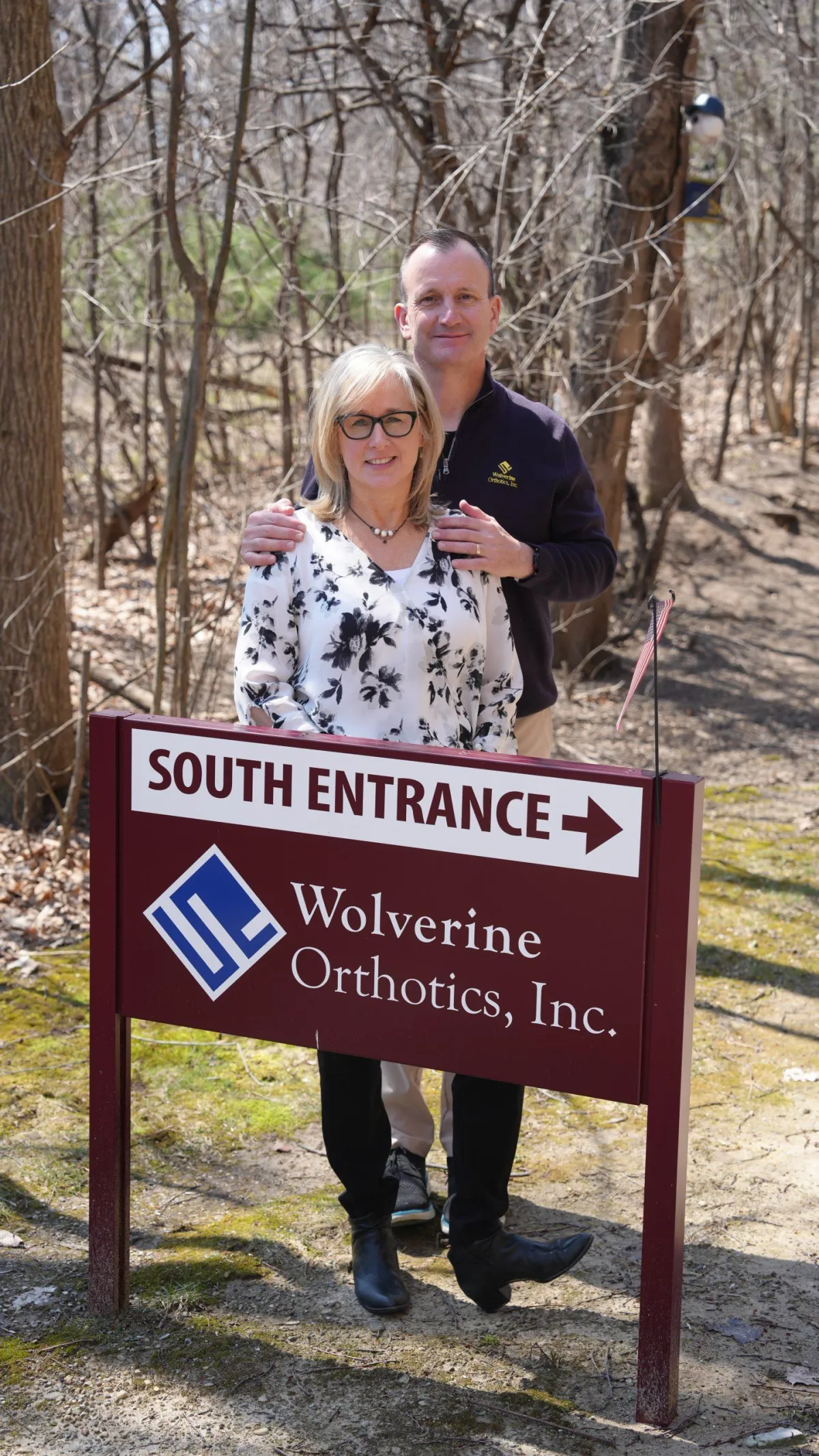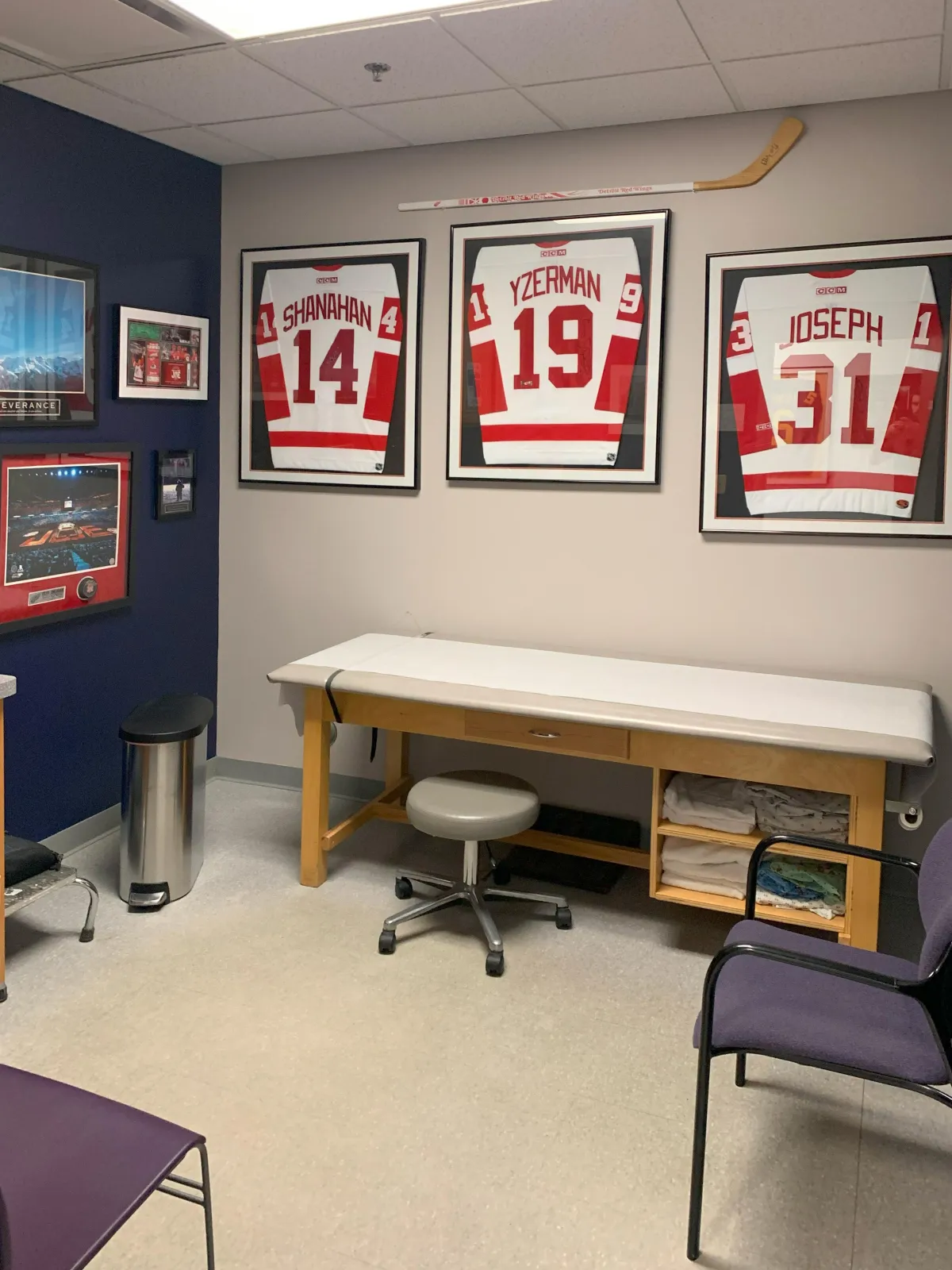Wolverine
Orthotics
We help you to live a better life.
ABOUT US
We are American Board Certified Orthotists who specialize in spinal, upper and lower limb orthotics. We offer:
In-house fabrication on non-patented orthoses
Door-to-door services provided
Not affiliated with any insurance companies
Family-owned and operated since 1995
We commit to spending the time with you that you need, seeing you as close to your scheduled time as possible, and following up on a scheduled basis.
Continuity of care with a practitioner who knows you and your needs, so you can get the best treatment possible

Frequently Asked Questions
Click the plus sign to learn more
Are all orthotics the same?
Simply put, no. Off-the-shelf orthoses are made to a pattern and are fitted by your shoe size. Custom-molded foot orthoses are made from a cast or plaster impression of your feet and fit you and only you, since foot types may be similar between people, but are not exactly the same from person to person. Several stores sell something that they call "custom" foot orthoses, but if the impressions are not from a mold of your foot, they cannot be truly called, "custom".
Are "custom" drugstore orthoses and braces just as good as those dispensed by a certified orthotist?
The truth is is they may cost less at the drug store but you do not get the same quality of item you would get at an Orthotics facility. Also, what would you do if there was a problem with the brace? Would they take the brace back? Would they adjust it for you? Is there someone there to assist you that has an advanced degree in Orthotics? Are you even getting the proper orthoses?
The old adage holds true: you get what you pay for.
Why don't my orthotics fit in all of my shoes?
The reason is that sometimes one pathology may need extensive support which may require a larger or more accommodative orthotics which will not fit in ALL shoes. For example, a full length diabetic orthotic must be well padded AND supportive which will limit the shoes that it is able to go into. Make sure you ask your orthotist BEFORE you are fit what shoes you will be able to wear.
Do you become dependent on using a brace?
The appropriate brace should only assist the structure that is injured or weak and allow "intact" structures to function as they are supposed to, independent of a brace. It is a quality of life question (i.e. if a volleyball player feels more secure with a brace and is able to play uninhibited without fear of injury, they should be allowed to wear the brace.) If you see better with glasses, shouldn't you continue to wear the glasses to help your vision?
If I have great insurance, should I assume my brace is covered?
No. While many braces may be covered, it is not always the case. It is always safer to check your policy and contact your carrier to see if you truly have coverage. At Wolverine, we are happy to provide you procedure codes in order to contact your insurance company.
Will a brace slow down my rehabilitation?
No. The proper orthosis should only assist you where you are weak and will allow you to be more efficient and not have to compensate for your weakness which can expend more energy and cause you to fatigue faster. Remember, the best brace is one that is only temporary.
If I have improper mechanics in my walking which are causing a problem, couldn't I just do exercises that would strengthen and improve my walking?
Unfortunately, physical therapy and exercise are great, but your gait mechanics are often a product of your genetic makeup and you do not have control over them. Therefore, you may need external support (a brace) to improve those mechanics and assist in your healing, pain reduction, etc. Now when you exercise with proper alignment, you will also be STRENGTHENING in proper alignment.
Why are devices are so expensive? It's just a piece of plastic....
Materials alone are not all that is included in the price of an orthosis. You are also paying for the expertise and time of your orthotist, the staff that assists in your care, billing questions, appointments, etc. Most important of all, you are paying for SERVICE and follow-up care should there be a problem. Your body is a dynamic and sensitive system and not everyone has an "off-the-shelf' configuration. Therefore, a certified orthotist has been extensively trained to treat all types of pathologies and body types.
Should I expect a custom orthosis should get rid of all of my pain?
Unfortunately, this is not always the case. Though our ultimate goal is complete pain relief; sometimes pain reduction is a more reasonable expectation. Oftentimes, a person's problem is multi-layered and a brace may not be able to improve ALL symptoms. Your orthotist should be able to inform you of what results you may expect from your orthosis.
Will a brace will make me look as if I am physically disabled?
Depending upon the brace, they may be visible to the naked eye, but some others are not noticeable beneath clothing. However, what is your main purpose? To walk better and pain free? Or to make sure you do not look differently from anyone else? Walking poorly without a brace can look much more obvious than walking properly with a brace showing. The perfect brace, which does not exist, is invisible, weightless, and free?
Will I have to wear ugly shoes with a brace?
Braces may limit your footwear to a lace-up or Velcro shoe with some extra depth in the toe box, but this is not always the case. Advances have been made in materials including lightweight carbon graphite which allow lower profile braces that fit into dressier type slip-on shoes. If your condition meets the brace parameters, you may be a candidate for this type of device. If in question, do not hesitate to contact your orthotist for an evaluation.
Will a brace take the place of surgery?
Braces do NOT take the place of surgery. Some braces allow you to postpone surgery for a period of time, but ultimately if you have been told that you need surgery, you most likely will still need it. However some braces serve as a predictor of whether surgery will be successful. For example, if you have been told that you need an ankle fusion, but are not sure if it will relieve your pain or not, a brace that immobilizes your ankle may be recommended initially. If the brace does relieve your pain, then you have a better idea as to what a fusion will feel like and your doctor will know that the surgery has a better chance of being successful. Also, some surgical implants have a lifetime of their own and do not last forever.
So if you are too young for a certain surgery, a postponement may be desirable.For example, certain knee braces can relieve symptoms in your knee by taking the pressure off of the joint and may be worn to reduce the wear on your joints and prolong the time before surgery becomes a necessity and not just an option. These are all issues that should be addressed by your surgeon first and secondly, by a certified orthotic provider.
If I am supposed to wear my orthosis all day, is half of the day half as good?
NO, this plan could actually make your situation worse. Your body would be use to the correction and then you would take it away. Full correction/support to no support is not a good or appropriate protocol when using orthoses.
Are any braces permanent?
Permanent means you are never able to be without them. Obviously, that is not the case because braces are removable. However, sometimes the need for orthotic management is long term depending upon your condition. For example, if you have one leg longer than the other and you wear a shoe with a lift on it, unless you have other issues arise, you will be wearing that lift as long as you are walking and standing.

(248) 324-3010
(248) 324-3003
Monday: 8 a.m. – 5 p.m.
Tuesday: 8 a.m. – 5 p.m.
Wednesday: 8 a.m. – 6 p.m.
Thursday: 8 a.m. – 5 p.m.
Friday: 8 a.m. – 5 p.m.
Saturday & Sunday: Closed
Copyright 2025 – Wolverine Orthotics


